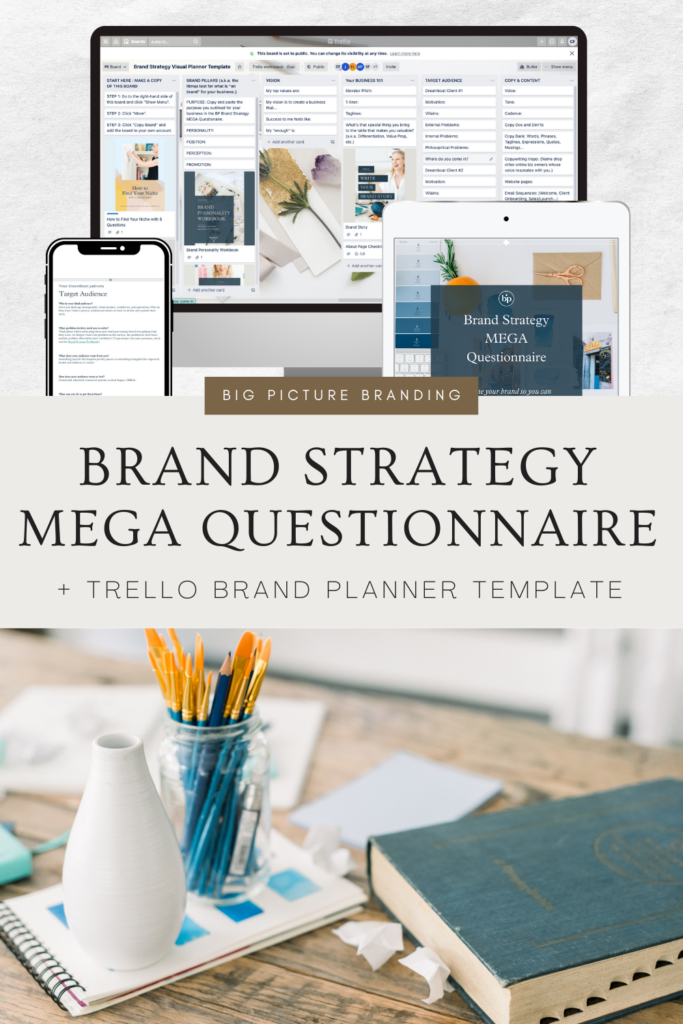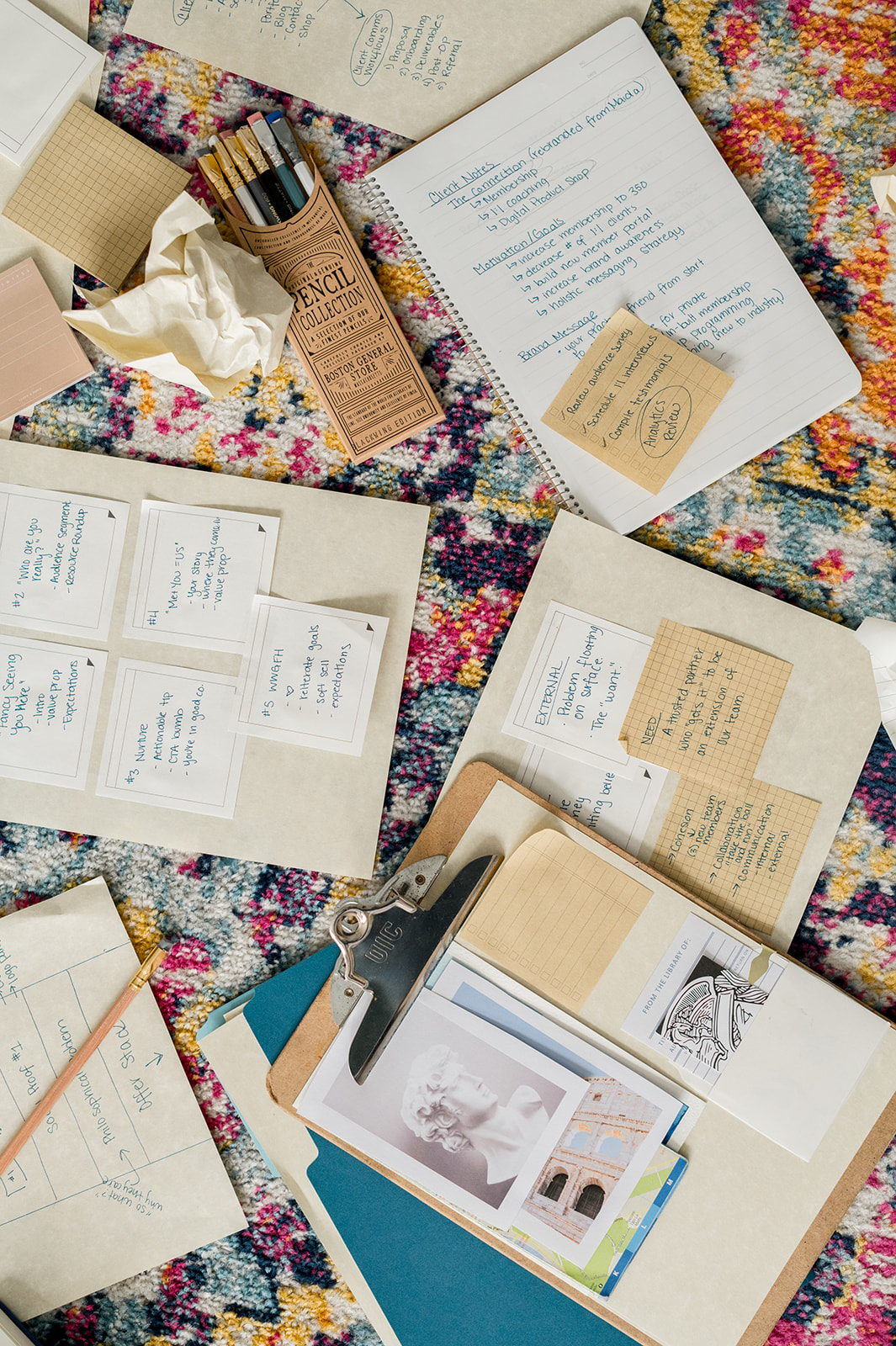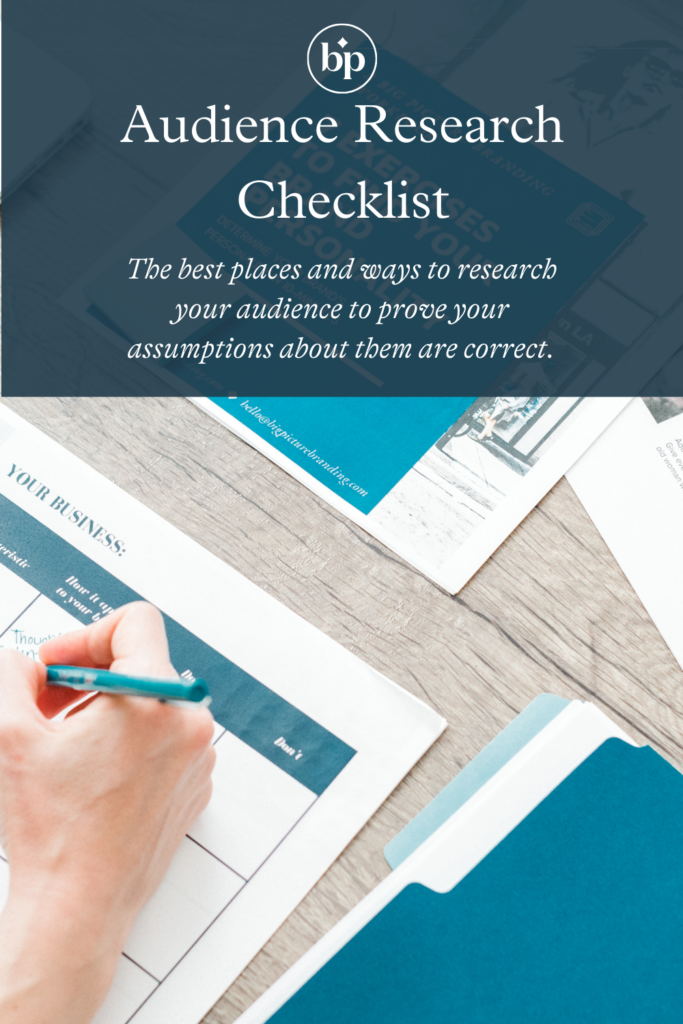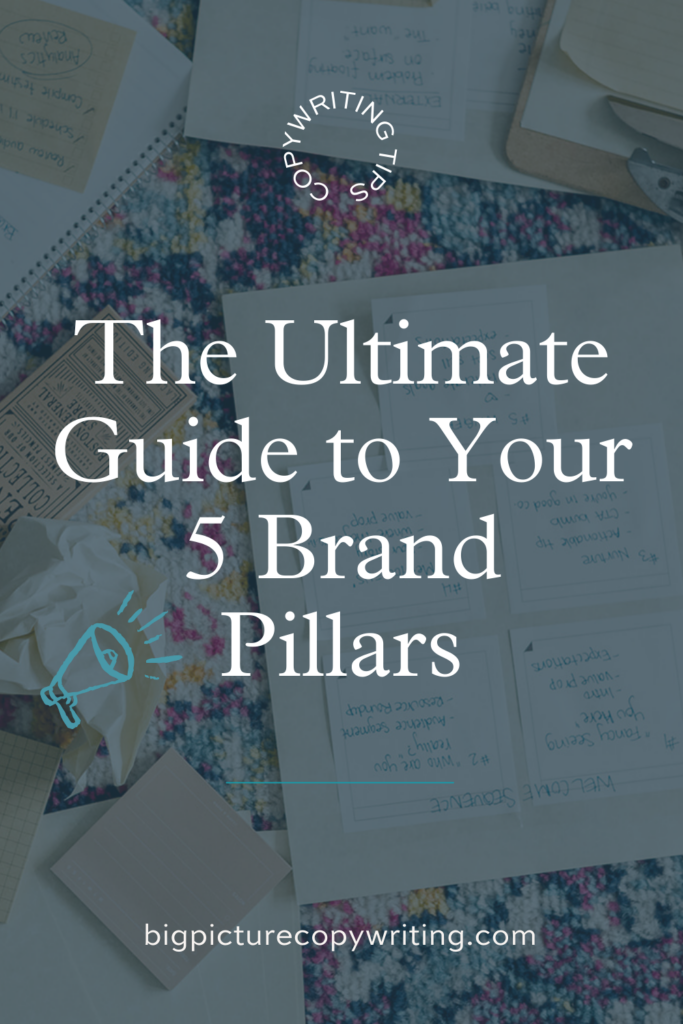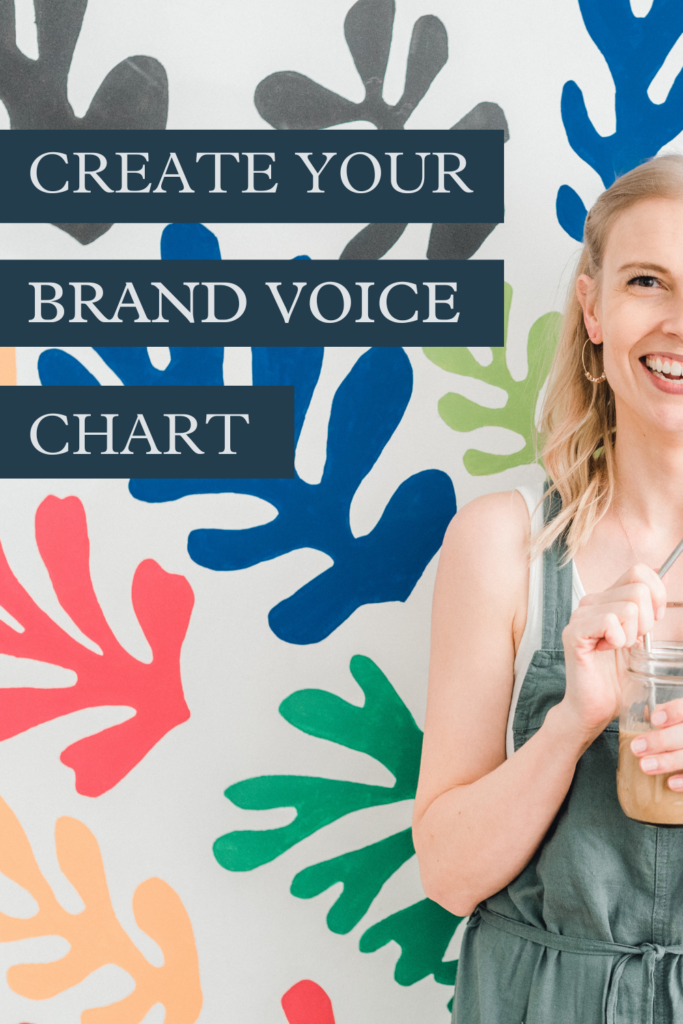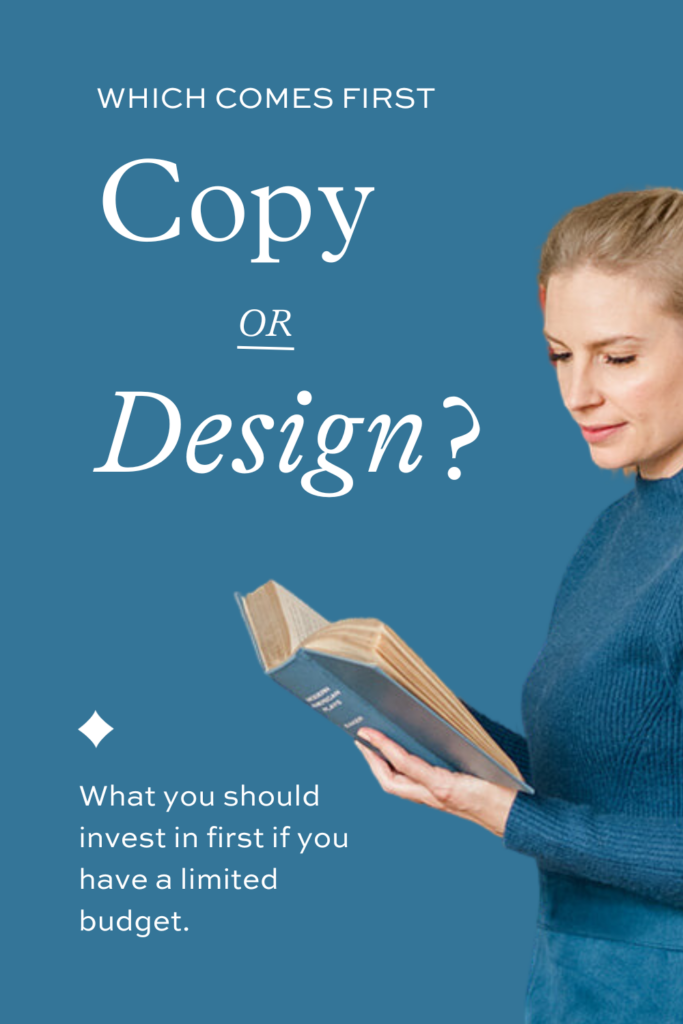At least once a quarter, I’ll hop on a call with a new business owner looking for done-for-you copywriting services and they’ll ask me this question: What’s the difference between brand design strategy and messaging strategy? Do I need both?
The difference between brand design strategy and messaging strategy is the end goal.
- One will result in a visual brand identity, but get you nowhere when it comes to figuring out your copywriting.
- One will help you figure out how to communicate your business and offers via words, phrases, and taglines, (or any marketing copy) but will not help you decide if your aesthetics should look this way or that.
However, both brand design strategy and messaging strategy can support each other. The goal is for the two to feel cohesive. You want the visuals on the page to match the vibe of your copywriting.
🤝
For example, it would be super confusing if your brand messaging is grounded and earthy while your visuals scream in hot pink with bold patterns and angular icons.
The process of designing your visual brand and developing your copy has some cross-over, but one is *never* a replacement for the other.
Both a copywriter and brand designer might ask you to describe your target audience, or purpose, or promise but will take that information and use it in completely different ways.
They might also have follow-up questions and need you to dig a little deeper into something they caught in your voice. In other words, you shouldn’t expect a brand designer to be satisfied with replacing a copywriter’s questionnaire and deliverables with their own and vice versa.
You should be prepared to respect each expert’s process.
Comparing a brand designer’s strategy to a copywriter’s strategy is like comparing apples to oranges.
🍎🍊They are both fruits but they are developed and presented completely differently.
Let’s compare the two…
What is Brand Design Strategy?
Brand design strategy focuses on how to visually communicate your brand’s values and personality. Its objective is to create a distinctive and memorable look that will make your business stand out and be easily recognizable across various platforms and media.
The design strategy work results in logo creation, color palettes, typography, imagery, and overall aesthetics.
However, it will not help you write your About bio or homepage copy.
Similar to your copy, impactful branding can evoke an emotional response from your target audience and create a strong first impression—a must when you’re competing against ever-dwindling attention spans!
What is Brand Messaging Strategy?
Brand messaging strategy focuses on articulating your 5 Brand Pillars (Purpose, Perception, Personality, Promotion, Position) in a way that resonates with your target audience.
Your messaging strategy is how your copywriter knows what to write and how to say it before rolling it into the copywritten deliverables (a website, emails, landing page, sales page, etc.)
Its objective is to map out how you’re communicating consistently across all channels, so you’re resonating with the right people, and connecting with others via your written and verbal words.
The messaging strategy articulates your brand voice, tone, taglines, key messages, brand story, content pillars, and more.
Your messaging strategy is going to be a much more in-depth internal process that results in a lot of ah-ha moments and brand clarity.
Here at Big Picture Copywriting, we get into the nitty-gritty to figure out those key messaging phrases, taglines, content pillars, brand words, description copy, boilerplate copy, (and so much more) that you will use to talk about you, your business, your services, and products.
The 5Ps is a signature Big Picture framework that I pair with my signature Audience Persona & Brand Messaging Framework, your Brand Voice excavation, Audience Research, and voice-of-customer client interviews to “flip the script” and turn those talking points into compelling website and email copy.
By the time you’ve developed your messaging strategy, 90% of your copy is written or blueprinted.
The next step is organizing your messaging hierarchy and structuring it for a conversion-focused web page or email campaign.
Two Weeks To Done
Brand Strategy & Website Copywriting
Let me articulate your brand story, refine your messaging strategy, and craft powerful copy that converts.
When it’s too hard to see the forest from the trees, it’s time to call an audible on doing it all yourself. Skip those weeks (months?) of analysis paralysis and let me deep-dive into your messaging and copy.
Whether you’re looking to refresh, rewrite, or start from scratch, we’ll create audience personas, collect voice-of-customer data, outline site goals, page goals, keywords/metadata, CTAs, and lead-generating opt-ins. I’ll roll my research into SEO-rich website copy written for humans first, and Google second.
I’ll handle the heavy lifting and user testing while keeping you in the loop with collaborative docs and Loom video check-ins. I work with ONE full website copy client at a time so you can be sure you’re my #1 priority. Once we’ve crossed our Ts and dotted our Is, your designer-friendly docs will be ready for you to hand over to your web guru to implement.
(Need a designer or a brand photographer? I’ve got the hook-up. Let’s make a plan.)
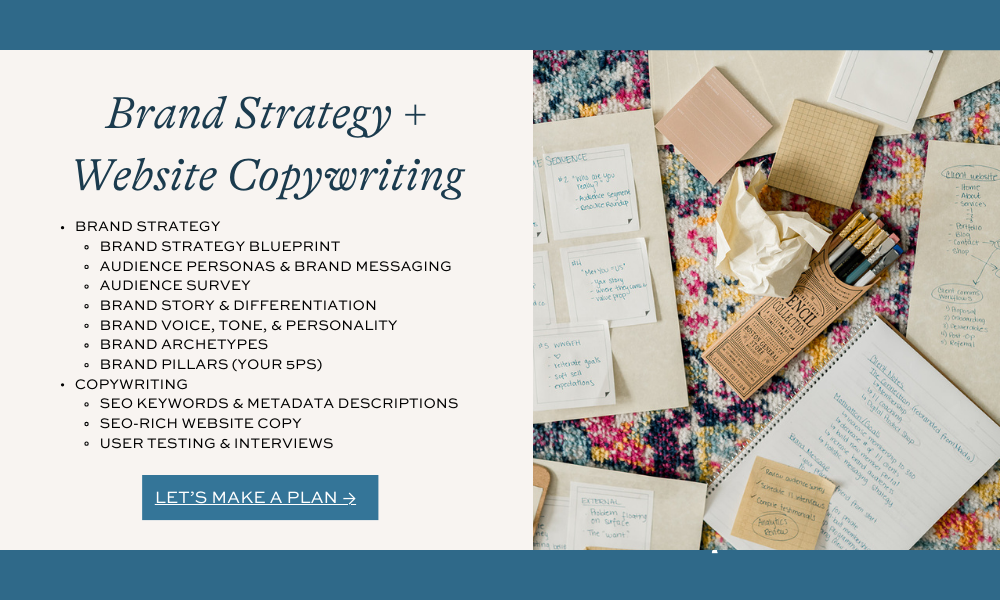
Which comes first, brand strategy or messaging strategy?
Copy dictates design. You should always start with your messaging strategy and then use your strategy to supplement the design process. This will result in a cohesive and intentional brand across the board.
The two processes can overlap—I often pass my messaging strategy deck over to a designer for them to use while I move into the copywriting phase of a project. This keeps the momentum going and helps everyone stay on time and on budget.
It’s tempting to dive into your brand colors and design first, but that’s like going furniture shopping before you’ve measured your space or defined what your home says about you when company walks in the door.
But doing things in the right order in the right way prevents you from making costly mistakes that will send you back to the drawing board.
MENTIONED IN THIS POST
